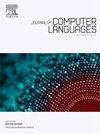基于chatgpt的动态评估聊天机器人
IF 1.8
3区 计算机科学
Q3 COMPUTER SCIENCE, SOFTWARE ENGINEERING
引用次数: 0
摘要
关于学习支持的信息工具的研究非常丰富,许多研究将自然语言分析和聊天机器人相结合。然而,现有的研究仍在努力提供针对不同学生理解水平的差异化教学指导。因此,本研究介绍了一个名为ChatDAC的聊天机器人,作为大学编程课程的教材。该系统采用与ChatGPT相同的GPT-4模型,在练习过程中,根据不同的理解水平,根据不同的回答类型,逐步为学习者提供分层提示,而不是传统的评估正确或错误的答案。数据分析显示,所有参与者的平均测试后分数与测试前分数相比显著提高,这表明ChatDAC有效地提高了学生的编程技能。此外,积极回答的比例与测试后得分之间存在显著的正相关。最后,从问卷调查和对学生的采访中收集了关于ChatDAC的见解,以及对未来改进的建议。本文章由计算机程序翻译,如有差异,请以英文原文为准。
A ChatGPT-based dynamic assessment chatbot
Research on information tools for learning support is abundant, with many studies integrating natural language analysis and chatbots. However, existing research still struggles to provide differentiated instructional guidance tailored to the varying levels of student understanding. Therefore, this study introduces a chatbot named ChatDAC designed as educational material for university programming classes. The system utilizes a GPT-4 model, the same model as ChatGPT, to progressively provide learners with tiered hints based on categorized response types representing different levels of understanding during practice sessions, rather than solely assessing right or wrong answers conventionally. Analysis of the data revealed a significant increase in average post-test scores compared to pre-test scores for all participants, indicating that ChatDAC effectively enhances students’ programming skills. Additionally, a notable positive correlation was found between the proportion of positive responses and post-test scores. Finally, insights from questionnaires and interviews with students about ChatDAC were gathered, along with suggestions for future improvements.
求助全文
通过发布文献求助,成功后即可免费获取论文全文。
去求助
来源期刊

Journal of Computer Languages
Computer Science-Computer Networks and Communications
CiteScore
5.00
自引率
13.60%
发文量
36
 求助内容:
求助内容: 应助结果提醒方式:
应助结果提醒方式:


